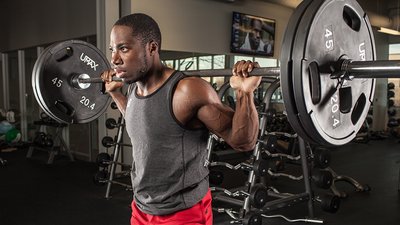What, you ponder, do you have in common with bodybuilding greats? It may not seem like much right now. But each of them, like you, had to start somewhere.
None of us were born with six-pack abs, and none came into this world with a 250-pound bench press. But the all-time greats like Arnold Schwarzenegger and Jay Cutler had a desire for self-improvement and undertook resistance training as a means to build up their physique.
Did they make mistakes along the way? Of course they did. Everyone does! But fortunately we've compiled a summary of the 10 most important training elements so that you, as a beginner, can learn from others' errors.
To get you started off right, we've also put together an eight-week beginner's program of full-body workouts that's built to challenge you as you get stronger. After that break-in period, you definitely won't be a rank beginner any longer.
Hungry for more? You can follow the full program, The Full-Body Workout for Beginners in BodyFit Elite. Track your workouts, swap out lifts to match your equipment, and watch demonstration videos of every movement in every workout!
10 Keys To Building Muscle
There are a lot of guys long on desire, but without the know-how who use the show-up-and-lift-it method, working any and every exercise in the gym every single day and hoping that something happens. Something usually does: They usually quit after about a month because nothing's happened. Fortunately you're on Bodybuilding.com and won't be making those same mistakes. Here's the info you need to understand to get started.
1. Work The Major Muscle Groups
Chances are you started lifting to get a bigger chest and arms, or strengthen your body for a particular sport. But working all the major muscle groups—chest, back, shoulders, quads, glutes, hamstrings, biceps, triceps (smaller muscle groups include the forearms, calves, abs)—allows you to build a symmetrical physique. This complete training also prevents muscular imbalances that can arise when you favor some body parts over others. Imbalances are no joke: They can lead to serious injuries.
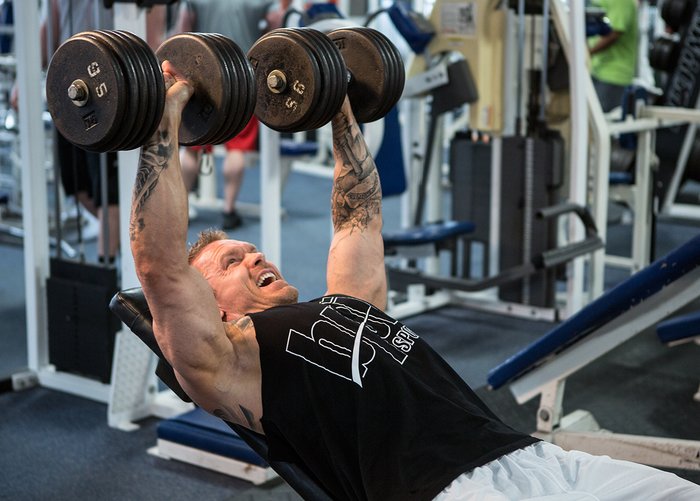
2. Practice Form First
Many of the basic movements presented here may be new to you. As a result, your coordination may be challenged at times. If so, don't worry. Keep practicing and rehearsing the movement pattern and soon it will feel like second nature—and that's when your gains in size and strength will take off. Until then, it's important to understand and practice the basic movements before using more challenging weights.
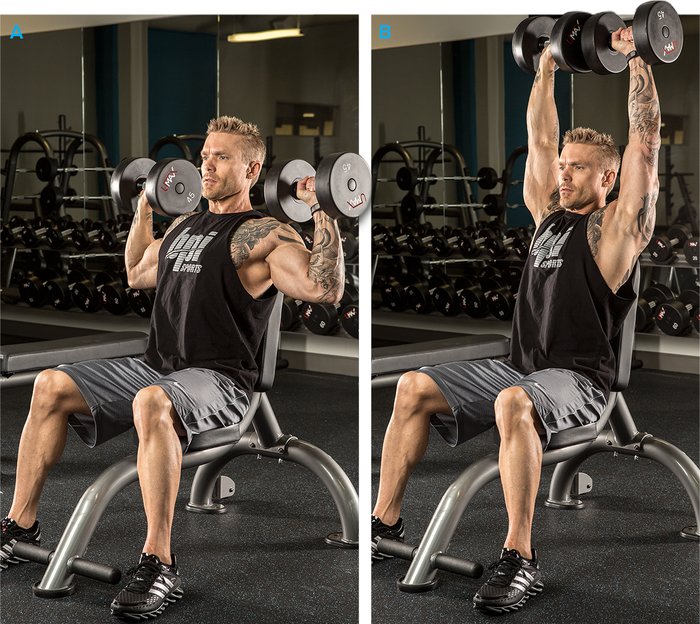
Seated Dumbbell Press
3. Multi-Joint Exercises Are Superior Over Single-Joint Moves
Exercises can be categorized into two classes: multi-joint and single-joint. The distinction is that with multi-joint exercises, two (or more) sets of joints work to accomplish the lift. With a single-joint move, only one set of joints is working. During a bench press, for example, action is taking place at both the elbow and shoulder joints, while in a barbell curl the movement is restricted to the elbow joint. Because more muscle is engaged when doing multi-joint moves, you can use far heavier weights and they're therefore better for achieving muscle and strength gains.
4. Do Multiple Sets Of An Exercise
There are decades of scientific research now available on resistance training, and the evidence points to doing 3-4 sets of a given exercise for maximum benefit. Typically you should do a warm-up set or two of that movement before tackling more challenging weights.
5. Too Heavy Or Too Light Is Too Bad
So how much weight should you lift? Warm-ups are always done with light weight to get the target muscles working in coordination. As a beginner, you'll choose light weights so you can do about 15 reps on each set. The last few reps should be very difficult to achieve but you should always be using "good form."
As you progress, you should use even more challenging weights, ones in which you reach muscle failure by 8-12 reps with good form. If you can do more than that number, the weight is too light. Individuals training for strength choose even heavier weights, typically doing fewer than 6 reps. Remember to never sacrifice form to lift a weight that's too heavy.
6. Control The Rep
The approach you should follow on each and every rep is like this: Inhale and hold your breath as you lift the weight in a strong and forceful manner, exhaling only over the top portion of the movement. Then lower the weight under control as you breathe in. Reverse direction smoothly at the bottom position, never bouncing the weight at the bottom.
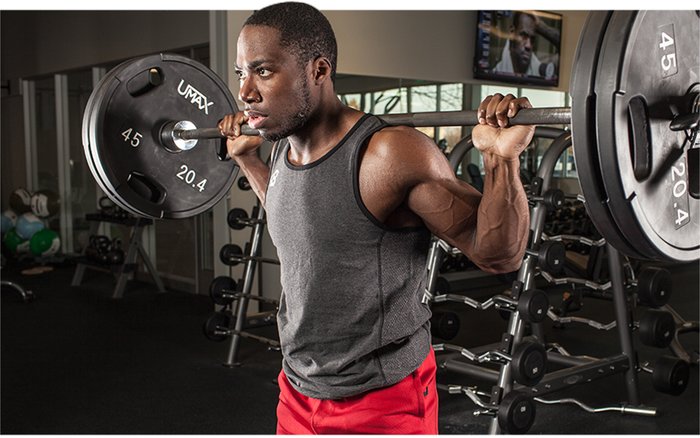
7. Take A Short Rest Between Sets
Your muscles fatigue during a set. They need time to clear the lactic acid and changes in the pH that build up in the surrounding tissue. This usually takes 90-120 seconds, though larger body parts like legs and back may take longer, and smaller muscle groups like arms and calves may take less. A good measure: when you catch your breath and feel ready to go, start a new set.
8. Get At Least 48 Hours Rest Between Workouts
This is key: The lifting you do at the gym is the stimulus that begins a chain of events that causes the muscle to repair itself and make itself stronger the next time you hit the gym. That takes time, nutrients and rest. Clearly, then, you can't train too often, and dismissing good nutritional habits and shortchanging your rest will be counterproductive to your muscle gains. In terms of training frequency, don't hit a given muscle group more frequently than once every 48 hours. As you become more advanced and add volume, you'll want to increase that rest period.
9. Strive To Do A Little More Each Workout
If your body responds to the training stimulus by growing stronger but you do the same weight for the same reps each workout, it's just not going to grow any further. Hence, you can't fall into the rut of repeating the same workout week-in and week-out. Strive to do more reps with a given weight or increase the weight from one workout to the next—that's the progressive stimulus you need to keep making positive improvements.
10. Follow This Plan For 8 Weeks
As a beginner you'll make noticeable jumps in strength the first two months, but typically gains start to stall when following any given program for too long. That's when it's time to make some larger changes in your training.
After the novice period, you can change your training split by re-arranging muscle groups and the number of exercises, sets, and reps on given days. Manipulating all these variables keeps your training fresh and offers new challenges to overload the target muscles. This is an exciting time for beginners because there are few other times in your training career in which you'll see jumps in strength on your basic lifts from one workout to the next.
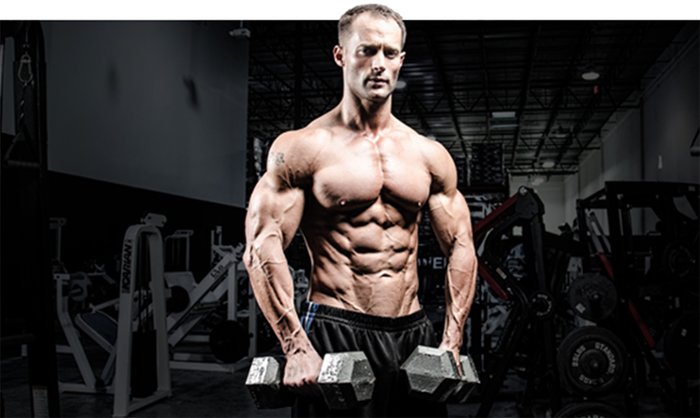
After the novice period, you can change your training split by re-arranging muscle groups and the number of exercises, sets, and reps on given days.
The 8-Week Beginner's Outline
- Do one exercise for each of the major muscle groups.
- The first two weeks you practice your form so the weight should be light. Do additional sets if you want to keep rehearsing the motion.
- The second two weeks you'll add another set. Start with a light warm-up set, then choose a slightly heavier weight for each of your next two sets. You should approach muscle failure by the target rep listed. Don't sacrifice good form to do more reps if the weight is too heavy. You know you reach muscle failure when you can't do any more reps on a given move with textbook form.
- You'll start with a light warm-up set during the third phase (weeks 5-8), then choose a more challenging weight for your second and third sets. Try to choose a weight so you can just reach the target rep; if you can do more reps the weight is too light, and if you can't reach the target rep the weight is too heavy.
- As you get stronger over the course of the program, do more reps and/or increase the weight to progressively challenge the working muscles.
- If a given barbell or dumbbell exercise is too difficult, find its machine counterpart and practice on that before going back to free weights.
- Follow this workout three times per week on nonconsecutive days (Mondays, Wednesdays and Fridays).


